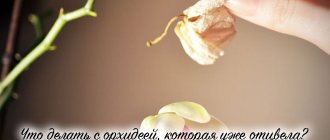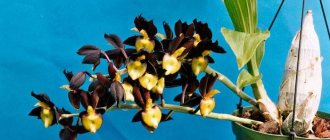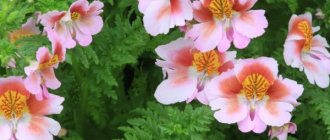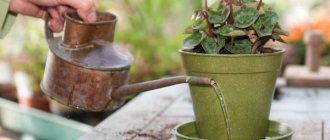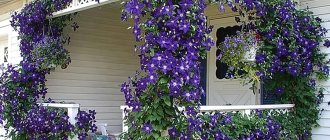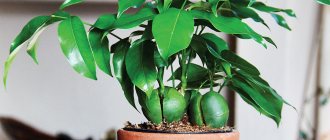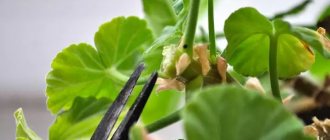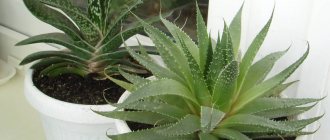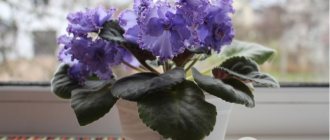There are many beautiful legends associated with orchids, one of which tells about a delicate plant with unusual flowers - the White Heron orchid.
On one of the Japanese islands, a shepherd was guarding goats; he was thinking about why someone is destined for an interesting, eventful life, while someone, like himself, is forced to just herd goats. He saw the answer in the meadow at his feet: an unusually beautiful flower grew on it, looking exactly like white herons flying in the sky. The shepherd realized that everything in the world is unimportant and passes quickly, and only beauty is eternal. He carefully dug up the flower and moved it to his garden.
Thus, according to legend, the White Heron has firmly entered the culture of Japanese gardens, where it is very popular and has been cultivated for not one or two hundred years.
Description and photo
The White Heron Orchid (lat. Habernaria radiata) belongs to the genus Habernaria and is found mainly in the following areas:
- Asia.
- Africa.
- South America.
- Far East of Russia.
A plant with a thin and straight stem, reaches a height of 20-30 (in rare cases 50) centimeters, which is classified as small or medium in size. The tubers are small, ellipsoidal or ovoid, 2-4 centimeters long. Each arrow usually gives rise to three or four flowers.
The leaves are juicy or light green in color, narrow oblong in shape, reaching 8 centimeters in length. The blooming flowers are a beautiful snow-white or pearl shade. The species is classified as protected.
Despite the fact that many Japanese families diligently grow it in their gardens, due to global climate change, the White Heron continues to become extinct.
Reviews
Orchids of the genus Habenaria are not very common among flower growers , this is explained by the fact that the plant is quite capricious and fastidious in its care. But some were still able to tame and learn the tricks of growing this variety.
Elena, housewife. “In my house there are a wide variety of orchid species; the standard of the genus Habenaria, namely the White Heron, always attracts special attention. During flowering, you cannot pass by this plant; it is extremely beautiful. I ordered the bulbs online; when they arrived, I seriously doubted their germination. In the spring I planted them strictly according to the instructions and by the end of summer the orchid delighted me and my family with its blooms. For the winter, I cut it off and hid it in a dark and dry place, but apparently I overdid it with watering, the tubers rotted.
A couple of months later, my husband brought me the same tubers from a business trip, and I was more careful with them. For several years in a row, the plant has been pleasing us with its annual flowering; for the summer I have adapted to planting the standard in the garden at the dacha.”
The White Heron Orchid is beautiful, but quite capricious and finicky to care for.
Alexandra Egorovna, pensioner. “Flowers have always meant a lot to me; all my life I have surrounded myself with this miracle of nature. After retirement, I had more time, so I started working on my dacha and indoor flowers more diligently. The first orchids were given to me by my children, and then it went on and on... I traded with many friends, ordered plants by mail, and bought them in flower shops. At the moment I have a large number of indoor flowers of various types and families, but the orchids are the most exotic.
A favorite among them is the White Heron standard, which simply blows away everyone during flowering. The plant is quite fastidious in its care; before purchasing, I looked through a large amount of various literature to find out all the intricacies of care.”
Tatiana, owner of a flower greenhouse. “I have loved flowers since childhood, which is why my hobby has grown into my favorite job. White Heron brought the orchid with her own hands from China and purchased it from one of the well-known companies. Now we successfully cultivate this species in our latitudes and sell it in pots to other lovers of exotic plants. Each standard comes with short instructions on how to properly care for the flower at home.”
Reviews indicate that it is possible to grow an orchid of the genus Habenaria at home, the main thing is to strictly follow all care recommendations.
Difference between the White Heron and other orchids
Among the huge variety of plants of this family, identifying this particular species will not be difficult :
- Habernaria radiata flowers are unique and resemble white flying birds,
- the orchid is quite picky and capricious in care, unlike many related plants,
- tuberous root system,
- during the dormant period, the above-ground part dies off completely,
- needs high humidity,
- the roots are completely immersed in the soil.
Species of the genus Habernaria
There are several relatives of the White Heron.
Yezo guide – Habenaria yezoensis
It grows in Russia on the Kuril Islands , or rather exclusively in the swamps of Kunashir. Also grows in Japan. It has a straight stem and reaches 25-30 centimeters in height. The roots are tuberous, ellipsoidal in shape. In the lower part of the plant there are 6-7 linear-lanceolate leaves 4-6 millimeters wide and 6-11 centimeters long.
The inflorescences are up to ten centimeters in size and consist of 2-8 small flowers. One medium oval-shaped flower is surrounded by white unequal leaves. The ovary is twisted, with a short stalk. Flowering period is August.
Lineifolia grasshopper – Habenaria linearifolia
It grows in the marshy meadows of the Far East, feels comfortable near springs and in swamps . Also native to Japan, China, and the Korean Peninsula. The plant is tall - up to 70 centimeters; the tuber can have either a spherical or cylindrical shape.
There are few leaves, they are pressed to the stem, large, and grow linearly. The inflorescence consists of 8-15 small, up to one and a half centimeters in diameter, white flowers. The outer leaves are oval in shape, widening downward. The ovary is on a short stalk, twisted.
Psychedelic guide – Habernaria psycodes
The habitat is moist forests, swamps and grasslands of eastern North America . Can reach 90 centimeters in height. It has several significantly thickened roots. It has elliptical or wide oval, less often lanceolate leaves.
White flowers are rare; more often they are lilac in color. The lateral sepals are obtuse, oval, wider. The single upper sepal is narrow. Flowering period is from mid to late summer.
Guide jellyfish – Habenaria medusa
This endemic plant is found exclusively in Kalimantan, Sulawesi, Java and Sumatra. Because of its side petals, it is named after the Gorgon Medusa, a mythical creature with snakes on its head.
In its native lands, Jellyfish blooms during the hot and humid monsoons.
For the proper development of the plant, it is very important to maintain the seasonal growth cycle: the inflorescences and the entire above-ground part die off after 6-7 months, and a dormant period begins, during which the plant begins to store nutrients.
External characteristics
It is easy to recognize the White Heron orchid among other representatives of this genus; its distinctive features are as follows :
- An adult plant during the flowering period is quite large in size ; together with the peduncle, it can reach half a meter;
- The number of leaves may vary , it all depends on the conditions in which the plant is kept. Most often, during the growth period, at least eight leaves, arranged alternately, grow and actively develop from the tuber;
- The peduncle of the trunk is unbranched, its height can reach 40 cm. Each arrow most often produces one, less often 3-4, flowers;
- Orchid flowers of this species are shaped like a flying White Heron , the diameter of each of them can reach 6 cm. This shape is formed due to a fringed lip that is almost completely fused. The pearly white color of the flower is very similar to the color of white herons that live in swamps. This is where our beautiful orchid lives in natural conditions.
The orchid has several varieties, bred by breeders from different countries . They are distinguished by the colors and size of the leaves, the color of the flowers, and the height of the peduncle. Japanese botanists managed to develop radial symmetrical flowers; the hybrid is called “Hishou”.
Bloom
Most often, the time of active flowering occurs in the period from mid to late summer (July - early September) and lasts about two weeks. When the orchid finishes blooming, the above-ground part of the plant dies off until the next season.
The peduncles are short, medium in size, the buds are small - about 5 centimeters in diameter. The lateral lobes are framed at the edges with fringe, the middle lobe is solid and straight. The flower is pure snow-white.
With direct contact, the plant is absolutely harmless, has no poisonous thorns or pungent odor.
Maintenance and care
Orchids of the genus Habenaria radiata are rarely seen on windowsills; such flowers are quite capricious. Not every experienced gardener manages to grow this representative of orchids. In order for the standard to feel great, you need to create the necessary conditions for it :
- Cool temperatures , in summer the thermometer should not show more than 27 degrees;
- High humidity, at least 70%;
- The soil should not dry out , but there should not be excess moisture;
- An orchid of this type needs lighting.
Important! In winter, watering is reduced by half; a single moistening for two weeks is enough.
It is not recommended to replant the flower immediately after purchase , because most of these plants are purchased during the flowering period. It is recommended to replant after flowering before the dormant period.
It is recommended to apply fertilizer for the White Heron in a very diluted form ; it is best to use inorganic substances from specialized stores. Fertilize during the period of active growth once every two weeks. When the plant has expelled the peduncle, feed it a little less often.
Regular fertilizers will be the best stimulators of flowering . If the orchid blooms profusely and for a long time, then you are doing everything right.
Care after flowering consists of completely cutting off the above-ground part of the plant and giving it a period of rest .
of pests and diseases during the dormant period , the tubers are soaked in a solution of any fungicide for several minutes. Then the roots are well dried naturally.
Purchase and cost
You can purchase this plant:
- from a private seller, according to an advertisement,
- on the websites of large breeders specializing in orchids,
- wholesale, from large holdings.
The price for Habernaria radiata starts from 1,500 thousand and depends on the place of purchase : since the orchid is difficult to grow at home, the price for a private advertisement will be higher.
You can also buy seeds and young plants on the websites of specialized stores. Seeds will cost approximately 400-600 rubles per 100 pieces, a teenager - 300-500 rubles per plant.
Reproduction
Orchids of the genus Habenaria have several methods of reproduction, which will be equally effective :
- The bush is divided after the end of the flowering period;
- Division by rhizomes is carried out in the same period or in early spring, but flowering from the trunks should not be expected this season;
- After wintering, the plant is propagated by tubers that formed last summer; they are simply cut off and planted in a new pot;
- You can propagate by bulbs: if there are several shoots on one, then the plant can be safely cut into pieces;
- The longest is propagation by seeds , the process is very difficult and lengthy. Luck depends on the moss; it is in reaction with specific microflora that the collected seeds can sprout.
Advice! When propagating by division, do not forget to process the sections and disinfect the tools.
Landing
Choosing a pot
The White Heron loves cool weather and its roots should be completely covered with soil , so the pot should be wide, made of a material that does not conduct heat (stone, clay), 30-40 centimeters deep. You need to lay a layer of expanded clay on the stand and make sure it is wet.
The soil
To prepare a suitable substrate, pumice (small pieces), peat and sand are used; the ratio should be 1:1:0.5. A thin layer of sphagnum moss is laid on the surface. As another option, you can use a mixture of sand, moss, peat and perlite in equal proportions.
Planting process
- The tubers are soaked in water at room temperature for about fifteen minutes.
- Plant several at once in one pot. They should be recessed a little, about one and a half centimeters, with the pointed side down.
- The pot is placed on the window, with a southern, eastern or southeastern orientation.
Caring for a plant at home
- The orchid should be well lit from early morning.
- The soil should always be kept moist. The appearance of sprouts takes several weeks, after which watering is increased. You should use filtered water that has been standing for at least two days, ideally rainwater.
- Feed the plant with low concentration mineral fertilizers for orchids. Fertilizer frequency: once a month.
- The plant overwinters in a dark, cool room, with a temperature of about 8 degrees. In March it is returned to its place and watering begins.
- In the fall, the tubers need to be removed, dried and stored in a container with peat.
Germinating orchid seeds in flasks
The germination of orchid seeds in flasks shows quite good results. After all, if you want, you can create your own microbiological laboratory at home. For this, standard flasks are used, which must be sterilized in pressure cookers or in special medical sterilizers at a temperature of about 130 °C. When an orchid is planted with seeds, 100 ml flasks are usually used, which contain 30 ml of the finished solution.
Before germinating orchid seeds, you should carefully check all equipment and soil for sterility. After filling the flask with soil, each one is tightly covered with cotton wool and the internal state is monitored for about 5 days. If no pathogenic fungi or mold have appeared inside during this time, then everything is in order. But when bacteria multiply inside the flask, planting indoor orchid seeds is prohibited, and the sterilization procedure will have to be repeated.
Diseases and pests
The plant is very susceptible to fungal diseases and pest attacks due to high soil moisture. The most common enemies of orchids :
- scale insect,
- whitefly,
- worm,
- gray rot.
The most effective methods of control are treatment with Actellik or Fitoverm, and it is also necessary to transplant the plant into a newly prepared substrate. Gray rot will die after treatment with any antifungal agent.
Prevention of various problems
Treating the plant (its above-ground part) with a weak solution of phytoverm and regularly wiping the leaves on a preventive basis will avoid any troubles.
We can say that the White Heron is an incredibly beautiful, delicate and mysterious plant that occupies a special place in Asian, and especially in Japanese, gardening culture. The orchid is whimsical and an inexperienced gardener may not be able to grow it the first time. But the white flowers that look like beautiful birds are worth the time and effort. They will please the eye on warm summer days and remind you of the value of beauty.
Breeding offspring
During the mating season, males court females using special rituals.
When a pair has formed, nest construction begins immediately. A female great egret lays 2 to 6 eggs in one season. The incubation period for these birds lasts about 25 days. The clutch is carefully protected by both parents.
Surprisingly, the eggs of the great egret have an amazing azure hue.
Little egret cubs are born completely without feathers, blind and helpless. After 16 days, the babies stand on their feet, and after a month and a half, they are fully feathered. When the chicks are 7 weeks old, they try to fly out of the nest. From this moment, independent life begins, although parents look after their children for about a month.
Both parents take part in hatching the offspring.
These birds reach sexual maturity at two years old, and they live for about 15 years.
